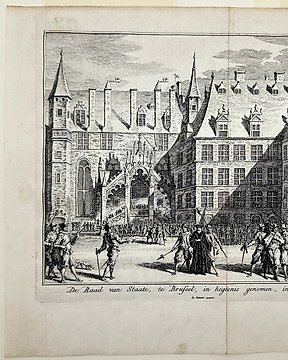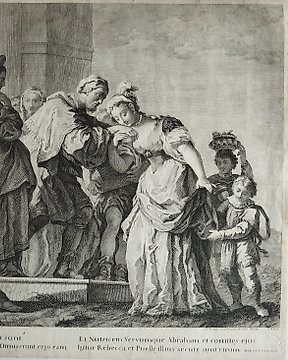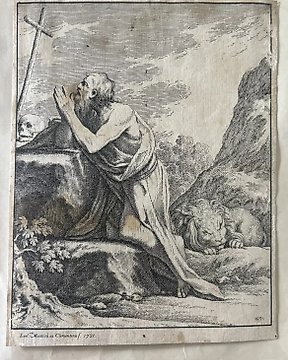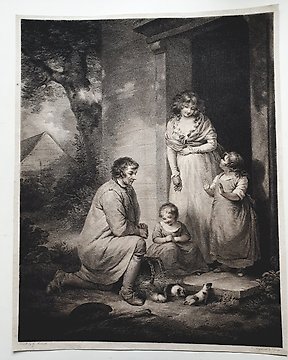KO All O.K. Thank yoi.M.M. Uni All O.K.Thank you. M.M.
Se oversettelseAlbrecht Dürer (1571-1528), after - The Desperate Man
Nr. 85070447

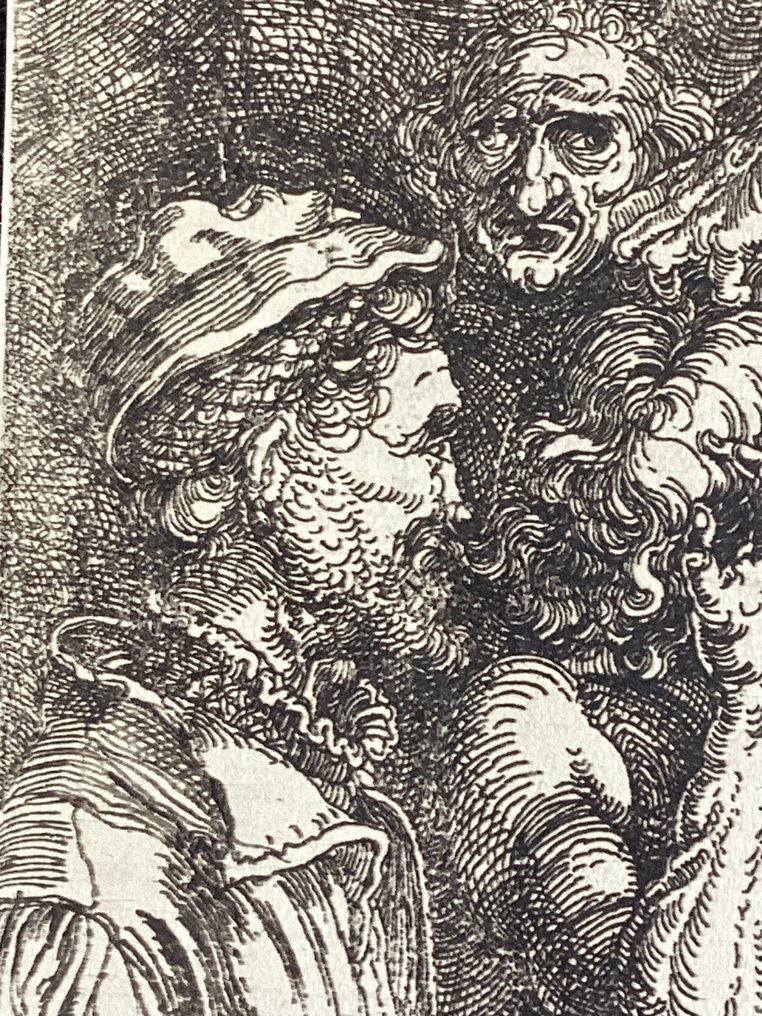
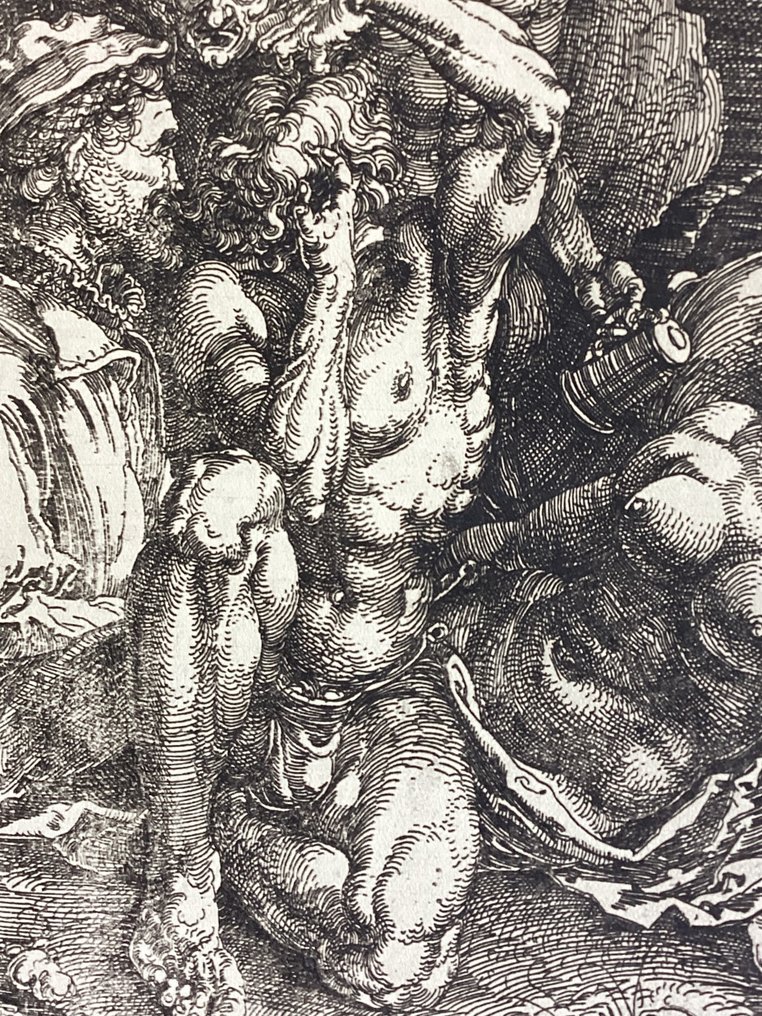
This strange image is now known just as sheet with five figures. Since it was one of Durer’s first etchings it could just be an amalgamated group of preoccupying doodles; artistic angst, the baleful influence of the shadow of Michelangelo (in the bust), women and drink (is that really a centaur?) and a comic mask for old age.
'This mysterious group of figures stands out in Dürer's work. The neutral title given here was first used by Bartsch in 1808, but the print has also been entitled 'The Dismayed Husband' (Hüsgen, 1798) 'The Bath' (Heller, 1827) and 'The Desperate Man' (von Retberg, 1871). Panofsky interpreted the print in terms of Dürer's continuing interest in the types of melancholy to affect the human condition which so preoccupied medical men of the day; with for example, the man in the centre, who apparently tears his hair, signifying choleric melancholy, the sleeping figure representing phlegmatic melancholy and the pleasure-seeking satyr representing sanguine melancholy.
This print is generally regarded as the earliest of Dürer's six etchings and since he was one of the first practitioners of the technique, which was probably developed by Daniel Hopfer (c.1470 - 1536) in Augsburg for the commercial production of ornament prints, this may have been an experimental plate in which Dürer amalgamated various images. The man on the left is based on Dürer's pen and ink profile portrait of his brother Endres of 1514 (Vienna, Albertina; Strauss 1514/31) with the addition of a beard, and the sleeping woman is reminiscent of a drawing of a woman asleep next to a drinking fountain of the same year (Vienna, Kunsthistorisches Museum; Strauss 1514/36)'
Bibliographic references;
Meder 1932 / Dürer Katalog (95)
Bartsch / Le Peintre graveur (VII.84.70)
Dodgson 1926 / Albrecht Dürer (80)
Schoch 2001-04 / Albrecht Dürer, das druckgraphische Werk. 3 vols I Intaglio, II Woodcuts, III Book illustrations (I.79)
(British Museum)
This later heliogravure impression was made in 1914 in Munich.
This strange image is now known just as sheet with five figures. Since it was one of Durer’s first etchings it could just be an amalgamated group of preoccupying doodles; artistic angst, the baleful influence of the shadow of Michelangelo (in the bust), women and drink (is that really a centaur?) and a comic mask for old age.
'This mysterious group of figures stands out in Dürer's work. The neutral title given here was first used by Bartsch in 1808, but the print has also been entitled 'The Dismayed Husband' (Hüsgen, 1798) 'The Bath' (Heller, 1827) and 'The Desperate Man' (von Retberg, 1871). Panofsky interpreted the print in terms of Dürer's continuing interest in the types of melancholy to affect the human condition which so preoccupied medical men of the day; with for example, the man in the centre, who apparently tears his hair, signifying choleric melancholy, the sleeping figure representing phlegmatic melancholy and the pleasure-seeking satyr representing sanguine melancholy.
This print is generally regarded as the earliest of Dürer's six etchings and since he was one of the first practitioners of the technique, which was probably developed by Daniel Hopfer (c.1470 - 1536) in Augsburg for the commercial production of ornament prints, this may have been an experimental plate in which Dürer amalgamated various images. The man on the left is based on Dürer's pen and ink profile portrait of his brother Endres of 1514 (Vienna, Albertina; Strauss 1514/31) with the addition of a beard, and the sleeping woman is reminiscent of a drawing of a woman asleep next to a drinking fountain of the same year (Vienna, Kunsthistorisches Museum; Strauss 1514/36)'
Bibliographic references;
Meder 1932 / Dürer Katalog (95)
Bartsch / Le Peintre graveur (VII.84.70)
Dodgson 1926 / Albrecht Dürer (80)
Schoch 2001-04 / Albrecht Dürer, das druckgraphische Werk. 3 vols I Intaglio, II Woodcuts, III Book illustrations (I.79)
(British Museum)
This later heliogravure impression was made in 1914 in Munich.
- 126
- 3
- 2
Vlag dekt de lading niet
Se oversettelseDear Sir, I’m sorry you feel that the lot was not as described. Please be more specific as to why so we. Can respond more clearly. Best, John
A very good clean print, exactly as described and well packed.
Se oversettelseParfait !
Se oversettelsevery beautiful !
Se oversettelseA good copy of a print which was as described, if you read it all carefully. Well packed but not speedily sent.
Se oversettelsePerfect!!!
Se oversettelsewszystko ok,dziękuję
Se oversettelseExcellent
Se oversettelseZeer goed verpakt en in prima staat ontvangen. Hartelijk dank!
Se oversettelsePièce de qualité, envoi soigné, mais avec taxes non prévues…
Se oversettelseExpédition rapide et emballage soigné. Merci
Se oversettelseFully satisfied with purchase
Se oversettelseHi! Everything all right. Thank you. Best Regards
Se oversettelseNice object; faithful to the presentation at auction. Excellent packaging and fast shipping. I am satisfied with the purchase. Thanks.
Se oversettelseAll's is ok
Se oversettelseTutto ok
Se oversettelseTutto perfetto! Ottimo venditore
Se oversettelsePerfect!!!
Se oversettelseperfect, thank you!
Se oversettelsemy apologies for the delay, well received and super packing !
Se oversettelseParfait !
Se oversettelseReliable seller. Thanks!
Se oversettelseWell packed, nice picture as mentioned in the advert
Se oversettelseInteresting print thank you
Se oversettelse- 126
- 3
- 2
KO All O.K. Thank yoi.M.M. Uni All O.K.Thank you. M.M.
Se oversettelse



